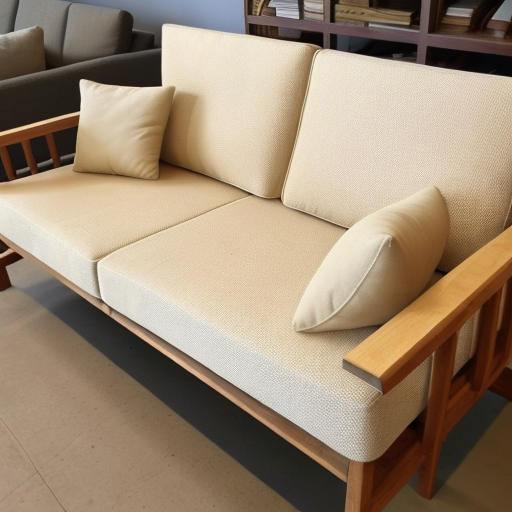Go Back
The Science Behind Sofa Materials: From Foams to Fabrics

When shopping for a new sofa, you may be overwhelmed by the sheer number of options available. Different materials, fabrics, foams, and sizes can all affect the comfort, durability, and aesthetics of a sofa, so it’s important to understand the science behind the materials used to make them.
Fabric:
Fabric is the first thing to consider when looking for a sofa, as it serves as the primary covering for the furniture. Different fabrics can offer a variety of benefits, from softness to durability. Natural fabrics such as cotton, wool, and linen are popular choices for sofas thanks to their breathability and soft feel, while synthetic fabrics like polyester and nylon may provide greater durability and stain resistance. The amount of traffic a sofa will get should factor into your fabric choice, as more delicate materials may not be able to withstand heavy use over time.
Foam:
Foam is the primary material used in most sofa cushions, as it provides a comfortable, supportive surface. Polyurethane foam is the most common type used in sofas, as it offers a variety of densities that can be tailored to suit the desired level of comfort. Memory foam is also becoming increasingly popular, as it offers superior pressure relief and contours to the body. Higher density foams tend to be more durable and supportive, while lower density foams may provide more comfort and sink in more easily.
Springs:
Springs are another important component of sofa construction as they provide support and durability. Springs come in two main types: coil and sinuous. Coil springs are individual springs that are tied together and typically inserted into pockets of fabric or foam. Sinuous springs are larger, continuous units that are usually attached to the frame directly. Coil springs tend to provide better support, while sinuous springs may provide more even distribution of weight.
Wood:
The frame of a sofa is typically made from wood, such as oak, pine, or ash. Hardwoods tend to be stronger and more durable than softwoods, so it’s important to consider the amount of traffic a sofa will receive and the desired level of durability. Though the type of wood used isn’t typically visible, it’s important to consider when selecting a sofa as it provides a base for the other materials and affects the overall durability of the piece.
A sofa is a major investment, so it’s important to understand the science behind the materials used in its construction. Different fabrics, foams, and frames can all affect the comfort, aesthetics, and durability of a sofa, so it’s essential to consider all of these elements when making a purchase.
#foam #Fabric #Springs #wood #cotton #wool #Linen #polyester #nylon #polyurethane #Memory Foam #Oak #Pine #Ash #Coil Springs #Sinuous Springs #Softwoods #Hardwoods